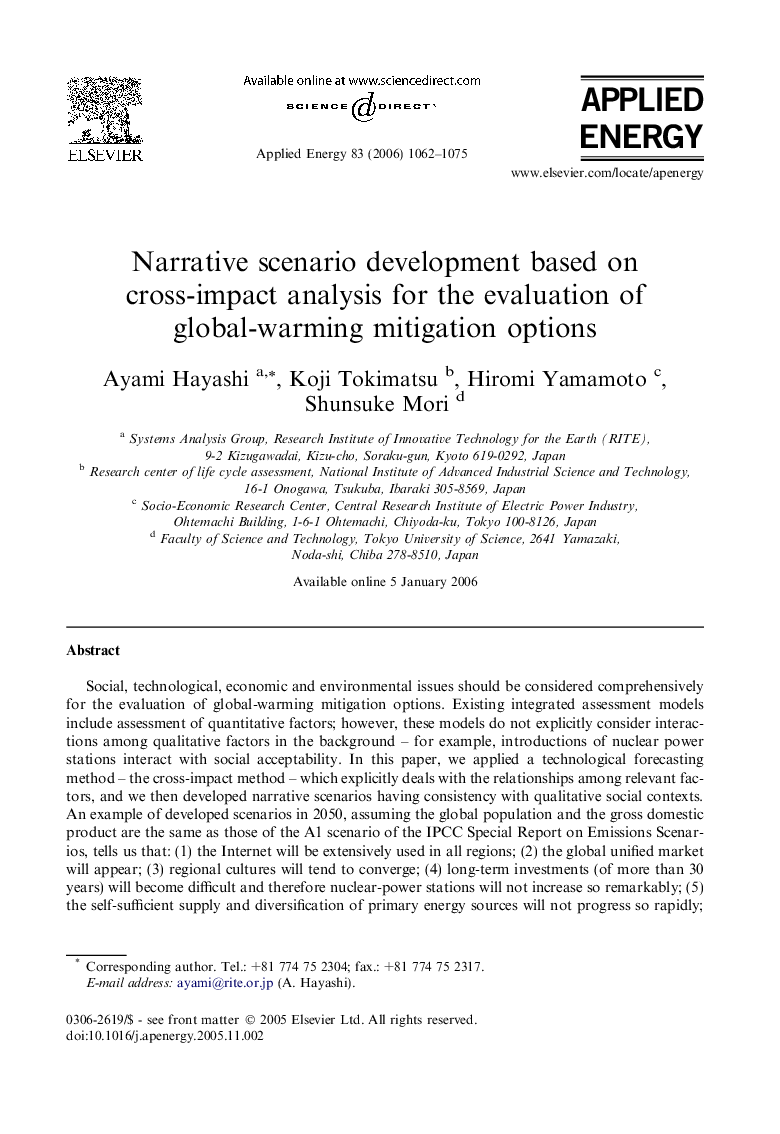| Article ID | Journal | Published Year | Pages | File Type |
|---|---|---|---|---|
| 245382 | Applied Energy | 2006 | 14 Pages |
Social, technological, economic and environmental issues should be considered comprehensively for the evaluation of global-warming mitigation options. Existing integrated assessment models include assessment of quantitative factors; however, these models do not explicitly consider interactions among qualitative factors in the background – for example, introductions of nuclear power stations interact with social acceptability. In this paper, we applied a technological forecasting method – the cross-impact method – which explicitly deals with the relationships among relevant factors, and we then developed narrative scenarios having consistency with qualitative social contexts. An example of developed scenarios in 2050, assuming the global population and the gross domestic product are the same as those of the A1 scenario of the IPCC Special Report on Emissions Scenarios, tells us that: (1) the Internet will be extensively used in all regions; (2) the global unified market will appear; (3) regional cultures will tend to converge; (4) long-term investments (of more than 30 years) will become difficult and therefore nuclear-power stations will not increase so remarkably; (5) the self-sufficient supply and diversification of primary energy sources will not progress so rapidly; and (6) due to the widespread use of the Internet, people will be more educated in global environmental issues and environmental costs will be more socially acceptable.
